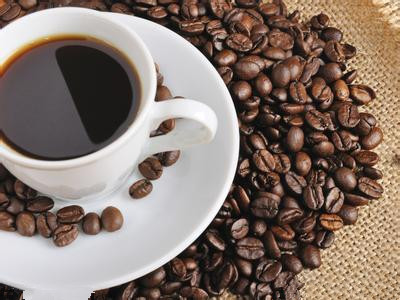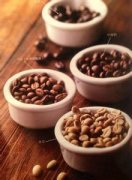The pros and cons of coffee there is not much more caffeine in coffee than green tea
Red wine and champagne are considered essential traditional drinks for romantic dinners. Now, however, men need to re-recognize this traditional habit. Researchers at the University of South Wales suggest that if you want to interact with a woman sexually after dinner, ask your woman to drink some coffee.

They conducted a series of experiments with female mice and found that a certain dose of caffeine made the mice have more frequent sexual contact. However, maybe this drink only works for women who don't drink coffee very often. If she drinks coffee a lot, you'll have to rely on wine and your charisma to ignite her passion.
There is a theory that a certain dose of caffeine will make the man in bed more active. Caffeine increases the speed of blood flow, which means more blood is sent to the sexual organs, which may prolong erections and sex. Therefore, coffee can be used as a substance to prevent erectile dysfunction.
There is not much more caffeine in coffee than green tea.
There are many theories about coffee, including praise and criticism. The claim that coffee is good for erections and can cause insomnia is entirely true. Its main effect on the body is to stimulate the nervous system.
Usually a cup of instant coffee contains as much caffeine (or a little more) as a cup of strong black tea. Green tea may contain more caffeine. However, people will carefully control the amount of coffee they drink from the afternoon, but there is no limit on the amount of tea they drink, because drinking tea will allow them to consume more caffeine.
The doctor advised people not to drink coffee for six hours before going to bed. The same should be true for drinking tea, because the coffee in tea is calmer and longer-lasting.
Decaffeinated coffee contains caffeine
If your coffee can says "decaffeinated coffee", don't think you're drinking colored water. Decaffeinated coffee is not caffeine-free, but contains less caffeine, which is five times lower than regular instant coffee and three times lower than cola.
Decaffeinated coffee contains chemicals
The process of decaffeination involves scalding raw coffee beans with hot water, making caffeine particles "float" to the surface, and then processing coffee beans with organic solvent dichloromethyl, roasting and treating them. Scientists hope that the coffee processing method, which is adopted around the world, will produce a product that is harmless to the human body.
The method of roasting and brewing determines the taste of coffee
The essential oil in coffee beans evaporates at a temperature of 200 degrees Celsius. The more essential oils extracted during baking, the more bitter the coffee will taste and the stronger the coffee flavor will be. According to the color of coffee beans, we can tell how they are baked. The color of raw coffee beans is white, even a little green, and by roasting, the color becomes darker, brown to black. The duration of brewing also affects the taste and composition of coffee. If you want to extract all the caffeine, soak it for as long as possible, and choose a darker way of baking.
Caffeine is not bitter
The bitterness of coffee is not caused by coffee. Chemists believe that coffee contains healthy antioxidants that make it bitter. If you want to be young and healthy, try to put up with the bitterness of coffee.
Important Notice :
前街咖啡 FrontStreet Coffee has moved to new addredd:
FrontStreet Coffee Address: 315,Donghua East Road,GuangZhou
Tel:020 38364473
- Prev

Some coffee terms commonly used in tasting coffee.
Flavor [Flavor]: the overall impression of aroma, acidity, and mellowness. Acidity [Acidity]: all coffee grown on the plateau has a strong acidity. The sour here is different from bitterness and Sour, and has nothing to do with pH. It refers to a fresh and lively quality that promotes coffee to exert its functions of invigorating the mind and clearing the taste. The acidity of coffee is not sour
- Next

Freshness is the life of coffee to determine the freshness of coffee beans.
Freshness is the life of coffee, how to determine the freshness of coffee beans? There are three steps: smell, see, and peel. Smell: put the coffee beans close to the nose and smell them deeply to see if you can clearly smell the aroma of the coffee beans. If so, the coffee beans are fresh enough. On the contrary, if the aroma is weak, or the greasy smell has begun to appear, the coffee beans are completely stale.
Related
- Beginners will see the "Coffee pull flower" guide!
- What is the difference between ice blog purified milk and ordinary milk coffee?
- Why is the Philippines the largest producer of crops in Liberia?
- For coffee extraction, should the fine powder be retained?
- How does extracted espresso fill pressed powder? How much strength does it take to press the powder?
- How to make jasmine cold extract coffee? Is the jasmine + latte good?
- Will this little toy really make the coffee taste better? How does Lily Drip affect coffee extraction?
- Will the action of slapping the filter cup also affect coffee extraction?
- What's the difference between powder-to-water ratio and powder-to-liquid ratio?
- What is the Ethiopian local species? What does it have to do with Heirloom native species?

